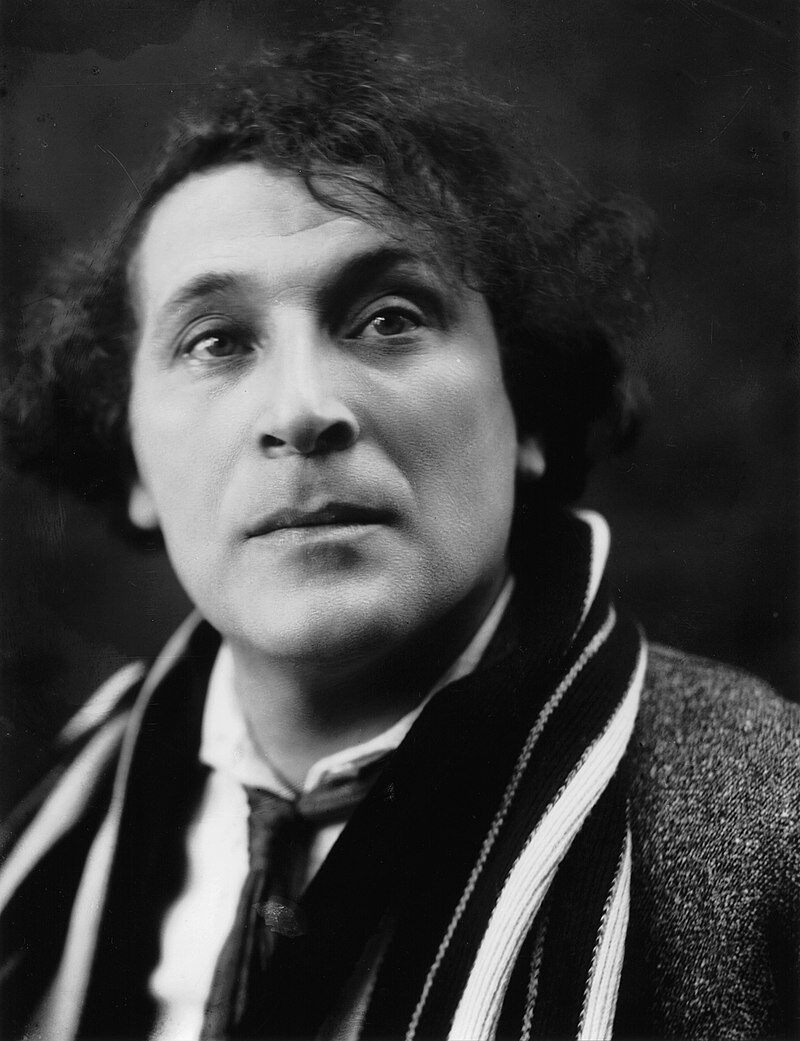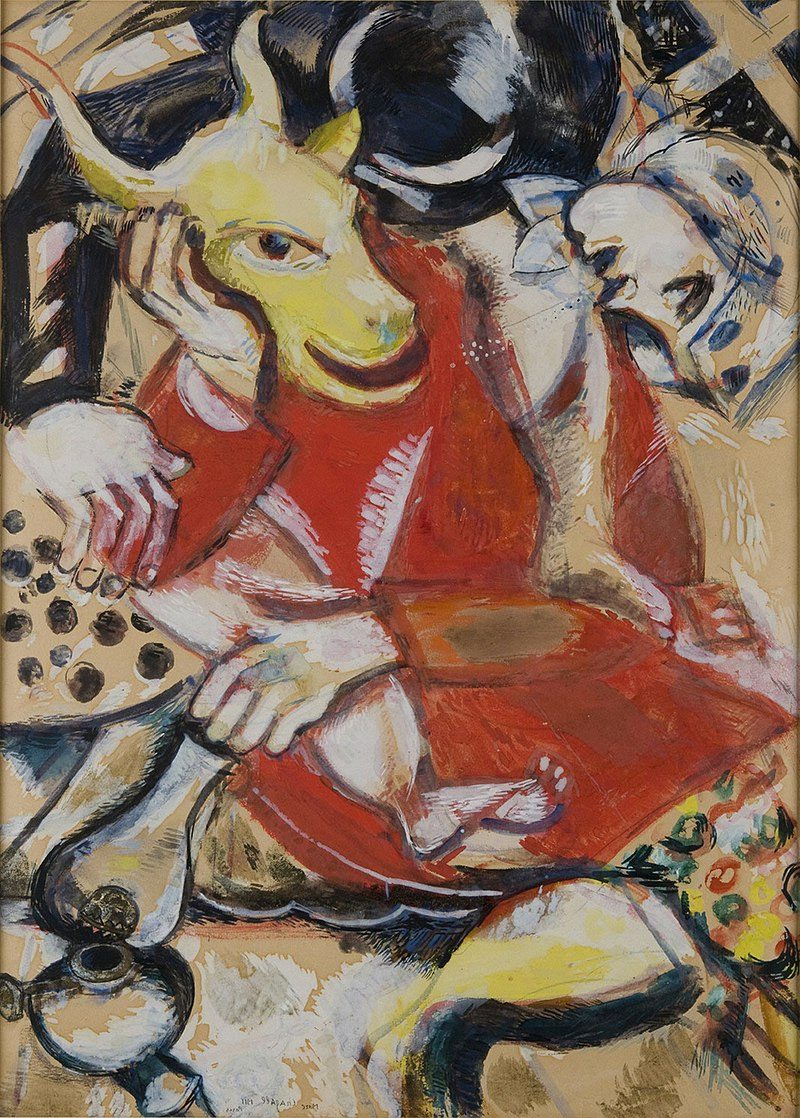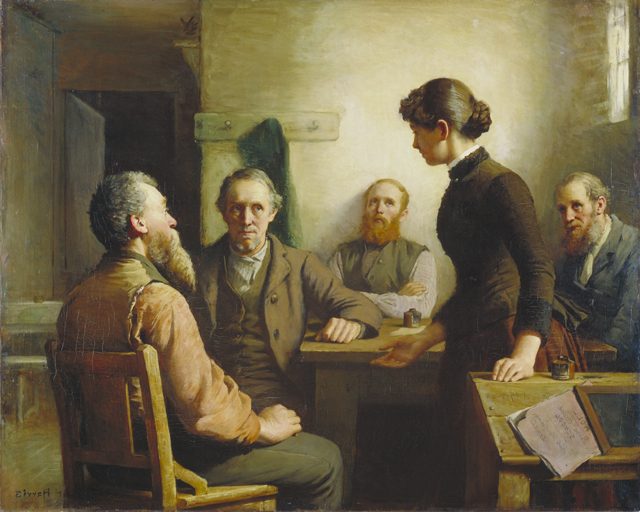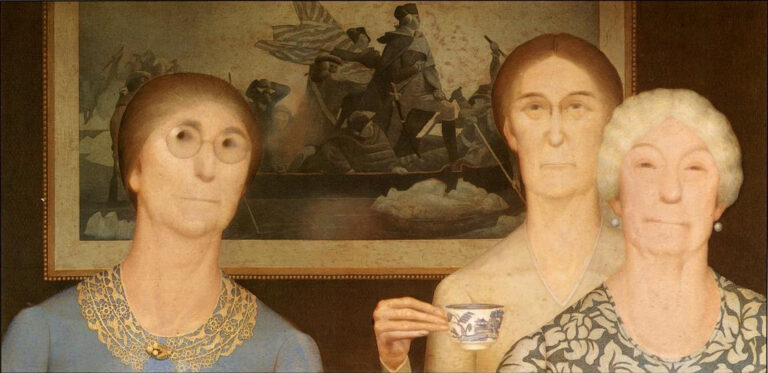Marc Chagall Painter: The Visionary Artist Who Transformed Modern Art
Born: 6 July 1887, Vitebsk Governorate, Belarus
Death: 28 March 1985, Saint-Paul-de-Vence, France
Art Movement: Cubism, Expressionism
Nationality: Russian-French
Teachers: Yehuda Pen and Léon Bakst
Institution: Zvantseva School of Drawing and Painting
Marc Chagall Painter: The Visionary Artist Who Transformed Modern Art
Early Life and Education
Marc Chagall’s path to becoming one of the most distinctive artists of the 20th century began in a small Russian town. His early experiences and education shaped his unique artistic vision and laid the foundation for his later success.
Birth and Origin
Marc Chagall was born Moishe Shagal on July 7, 1887, in Liozna, near Vitebsk, Belarus (then part of the Russian Empire). He was the eldest of nine children in a Hasidic Jewish family. His father worked in a herring warehouse, while his mother ran a small grocery store.

Birth, 1912 by Marc Chagall
Growing up in a vibrant Jewish community influenced Chagall’s artistic themes throughout his life. The colorful celebrations, folk traditions, and religious practices of his childhood became recurring motifs in his paintings.
Vitebsk, with its wooden houses and rural setting, served as a visual foundation for many of his later works. Despite the family’s modest means, Chagall’s mother recognized his talent and encouraged his artistic pursuits.
Artistic Influences
Chagall’s early artistic influences came from multiple sources. Jewish culture provided a rich tapestry of visual inspiration through religious symbols, folklore, and community traditions.
The Russian folk art tradition, with its bold colors and simplified forms, made a strong impression on young Chagall. He was also exposed to icon painting from Russian Orthodox churches, which influenced his approach to composition and color.
Local Vitebsk painter Yehuda Pen gave Chagall his first formal art lessons. Pen’s realistic style provided Chagall with technical foundations, though he would later reject strict realism.
Literature and music from both Jewish and Russian traditions enriched his visual vocabulary. These diverse cultural elements combined to form Chagall’s distinctive artistic perspective.
Formal Training
Between 1908 and 1910, Chagall studied at the Zvantseva School under Léon Bakst, who introduced him to contemporary art movements. Bakst’s connection to the Ballets Russes exposed Chagall to theatrical design concepts that would later influence his work.
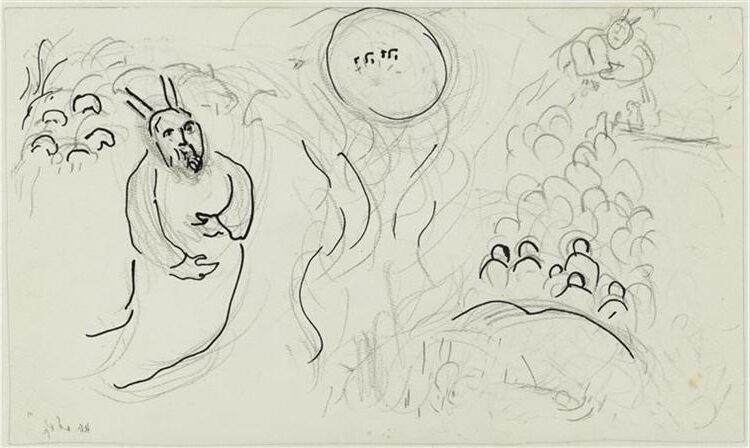
Moses with the Burning Bush, c.1963 by Marc Chagall
In 1910, Chagall relocated to Paris with financial support from a patron. This move proved pivotal as he absorbed the revolutionary artistic developments of Cubism, Fauvism, and Orphism.
At La Ruche (“The Beehive”), an artists’ colony in Paris, he interacted with leading avant-garde figures like Guillaume Apollinaire and Robert Delaunay. These formative experiences helped Chagall develop his distinctive style that blended modernist techniques with his personal cultural heritage.
Artistic Style and Themes
Marc Chagall developed a highly distinctive artistic style that blended various influences while remaining uniquely his own. His work incorporated elements from modern art movements alongside deeply personal symbolism drawn from his cultural heritage.
Cubism and Surrealism
Chagall’s approach to art absorbed aspects of Cubism but transformed them through his personal vision. Unlike strict Cubists who fragmented objects geometrically, Chagall used Cubist techniques more fluidly and expressively. He distorted perspectives and created dreamlike scenes where figures could float freely.

The Drunkard (Le saoul), 1911–12 by Marc Chagall
His work shared qualities with Surrealism, though he never formally joined the movement. The floating figures, animals, and objects in his paintings created impossible but emotionally resonant scenes. In “I and the Village” (1911), he arranged elements in a swirling composition that defied gravity and conventional space.
Chagall described his style as “logic of the poetic,” embracing imagination over strict visual reality. This approach allowed him to juxtapose memories, dreams, and emotions in a single canvas.
Jewish and Russian Folklore
Chagall’s Jewish heritage provided rich material for his artistic vision. He frequently depicted rabbis, Torah scrolls, and traditional celebrations from shtetl life. These images weren’t merely nostalgic but served as powerful cultural symbols within his work.
Russian folk tales also featured prominently in his paintings. Flying figures, magical animals, and village scenes reflected the storytelling traditions of his childhood. The fiddler character, seen in works like “Green Violinist” (1923-24), became a recurring motif symbolizing both Jewish culture and artistic expression.
Religion and folklore intertwined in his art. Biblical scenes appeared alongside village characters, creating a personal mythology that blended sacred and everyday experiences. His 1966 ceiling for the Paris Opera further demonstrated his ability to transform folklore into monumental art.
Use of Color
Chagall’s mastery of color stands as one of his most recognizable traits. He used vibrant, luminous hues that seemed to glow from within his canvases. Blues particularly dominated his palette, creating dreamlike atmospheres across his work.

Interior II, 1911 by Marc Chagall
His color choices often carried emotional and symbolic weight rather than depicting natural appearances. Red might represent passion, blue spirituality, and green life or nature. This expressive approach allowed colors to communicate feelings directly to viewers.
Chagall applied colors in bold, flat areas while also achieving remarkable transparency effects. His stained glass works for cathedrals and synagogues demonstrated his understanding of how colored light creates spiritual atmosphere.
Technical innovations included layering translucent colors to create depth and luminosity. This technique gave his paintings a distinctive radiance that complemented their dreamlike quality.
Notable Works and Legacy
Marc Chagall created an impressive body of work spanning eight decades, leaving behind thousands of paintings, book illustrations, stage sets, and public art pieces. His distinct style combining fantasy, folklore, and vibrant colors earned him international recognition during his lifetime and continues to influence artists today.
Famous Paintings
“I and the Village” (1911) stands as one of Chagall’s most recognized works, featuring dreamlike imagery of his childhood memories in Vitebsk. The painting uses vivid colors and floating figures to create a fragmented, cubist-inspired view of village life.
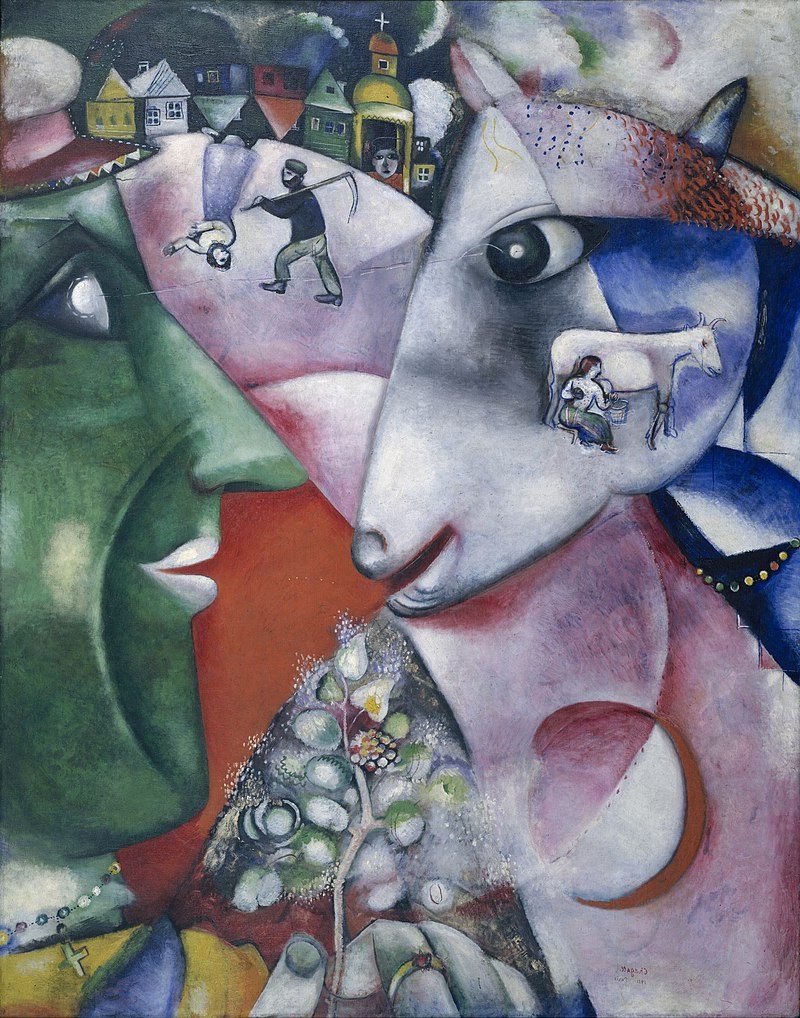
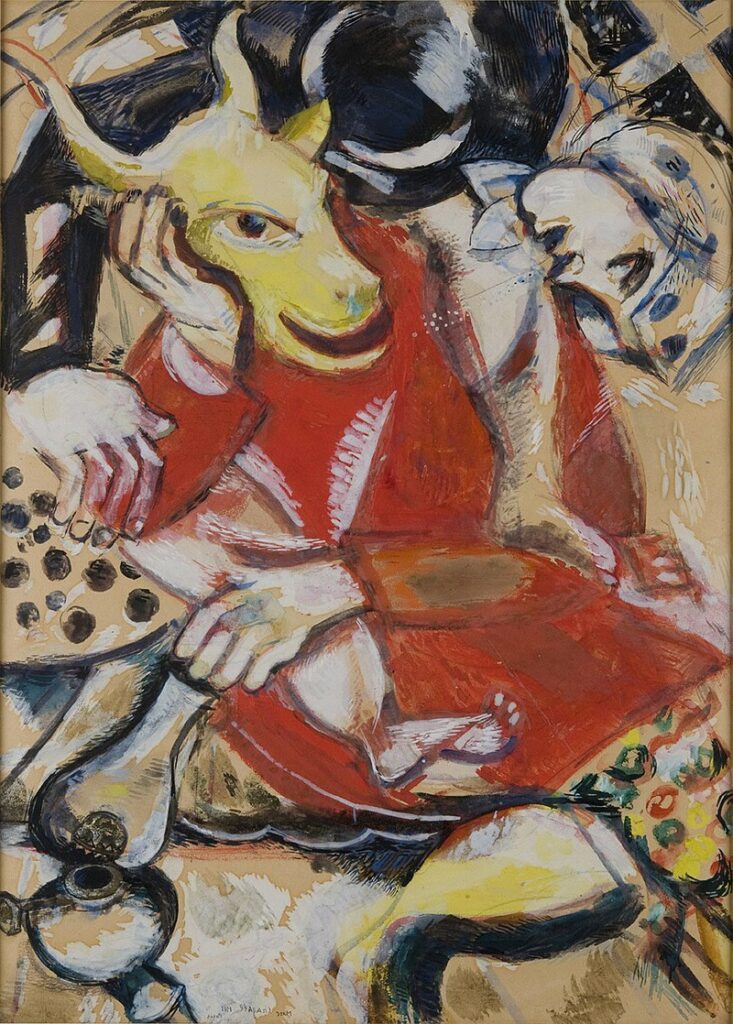
“The Birthday” (1915) captures a joyful moment where Chagall floats across the room to kiss his wife Bella. This work exemplifies his signature motif of floating figures.
“White Crucifixion” (1938) represents Chagall’s response to the persecution of Jews in Nazi Germany. Unlike his typically colorful style, this painting uses a somber palette to depict Jewish suffering around a crucified Christ.
“Over the Town” (1918) shows Chagall and Bella floating above Vitebsk, symbolizing love’s ability to transcend earthly boundaries.
Public Commissions
The Paris Opera ceiling (1964) remains one of Chagall’s most famous public works. The 2,400-square-foot painting pays tribute to fourteen composers and their musical works through Chagall’s distinctive colorful style.
Chagall created stained glass windows for numerous cathedrals and public buildings. His windows for the Hadassah Medical Center in Jerusalem (1962) depict the twelve tribes of Israel in radiant colors that transform with changing daylight.
The “Four Seasons” mosaic in Chicago (1974) covers all sides of a rectangular box in Chicago’s Loop district. Each side represents a different season using Chagall’s characteristic imagery of animals, flowers, and human figures.
Influence on Modern Art
Chagall’s dreamlike style bridged several major art movements without fully belonging to any of them. His work influenced Surrealism through his exploration of dreams and the subconscious mind.
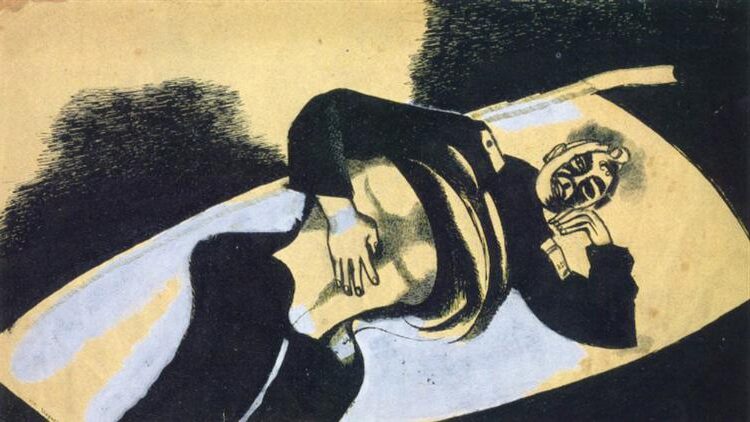
On the Stretcher (Wounded Soldier), 1914 – Marc Chagall
Artists like Pablo Picasso and Henri Matisse respected Chagall’s unique approach to color and composition. Picasso once remarked, “When Matisse dies, Chagall will be the only painter left who understands what color really is.”
Contemporary artists continue to draw inspiration from Chagall’s ability to blend personal narrative with universal themes. His integration of Jewish symbolism and folklore helped legitimize cultural identity as valid subject matter in modern art.
Chagall’s work appears in major museums worldwide, including the Museum of Modern Art in New York and the Musée National Marc Chagall in Nice, France.
Frequently Asked Questions
Marc Chagall’s art inspires many common questions about his style, influences, and legacy. His unique blend of cultural elements and artistic techniques established him as a pioneer in modern art.
What are the key themes and symbols commonly found in Marc Chagall’s artwork?
Chagall’s paintings often feature floating figures, animals, and village scenes. These elements often represented memories from his childhood in Vitebsk, Belarus.
Religious imagery appears frequently, drawing from his Jewish heritage. Biblical scenes, rabbis, and ritual objects serve as prominent symbols throughout his work.
Love is another central theme, often depicted through embracing couples that float through dreamlike skies. Roosters, violinists, and circus performers also recur as personal symbols in his colorful compositions.
How did Marc Chagall’s early life and background influence his painting style?
Born in 1887 in Vitebsk, Chagall’s Russian-Jewish upbringing provided rich cultural material for his art. The folk traditions, religious practices, and village life became foundational elements in his paintings.
His early training under Yehuda Pen introduced him to traditional techniques. Later, moving to St. Petersburg and then Paris expanded his artistic horizons while maintaining his cultural roots.
The contrast between his provincial upbringing and cosmopolitan experiences created the unique tension in his work. This duality allowed him to blend traditional Jewish imagery with modern artistic approaches.
Can you describe the evolution of Marc Chagall’s artistic techniques throughout his career?
Chagall’s early work showed influences of Russian folk art and icon painting. After moving to Paris in 1910, he absorbed elements of Cubism and Fauvism while maintaining his distinctive style.
During his middle period, he experimented with various mediums including stained glass, ceramics, and tapestries. His color palette became more vibrant and his compositions more complex during this time.
Later works revealed a more refined approach to his recurring themes. His techniques expanded to include large-scale public art projects while maintaining the dreamlike quality that defined his style.
What impact did Marc Chagall have on modern art, and how is he viewed by contemporary art critics?
Chagall helped bridge traditional and modern approaches to art. He demonstrated that personal and cultural narratives could exist alongside avant-garde techniques.
Art critics recognize his unique contribution to surrealism despite his reluctance to join formal movements. His ability to maintain a distinctive voice while engaging with modernism continues to draw critical praise.
Contemporary scholars value his role in preserving cultural memories through art. His work creates important connections between Jewish heritage, Russian culture, and Western artistic traditions.
Which notable art movements or schools is Marc Chagall associated with, and how did he contribute to them?
Though never formally aligned with a specific movement, Chagall intersected with several major artistic developments. His work contains elements of Expressionism in its emotional intensity and distorted forms.
He engaged with Cubism but transformed its analytical approach into something more personal and dreamlike. His contributions to Surrealism came through his intuitive approach to fantasy imagery rather than conscious technique.
Chagall helped pioneer the School of Paris, a diverse group of artists working in the French capital. His distinctive style showcased how artists could incorporate varied influences while maintaining their unique vision.
What are some of the most famous works by Marc Chagall, and where can these pieces be viewed?
“I and the Village” (1911) captures his early style. You can see this painting at the Museum of Modern Art in New York. This painting combines fractured Cubist elements with folklore imagery from his childhood.
“The Birthday” (1915) shows lovers floating in an embrace and is housed at the Museum of Modern Art as well. The painting exemplifies his dreamlike approach and personal symbolism.
The Paris Opera ceiling (1964) represents one of his most significant public works. You can find other major collections of Chagall’s art at the Centre Pompidou in Paris and the Marc Chagall National Museum in Nice, France.


